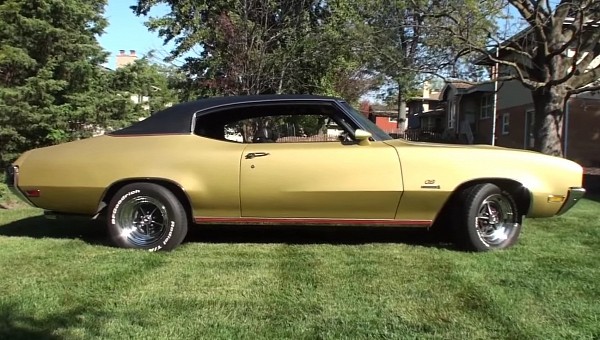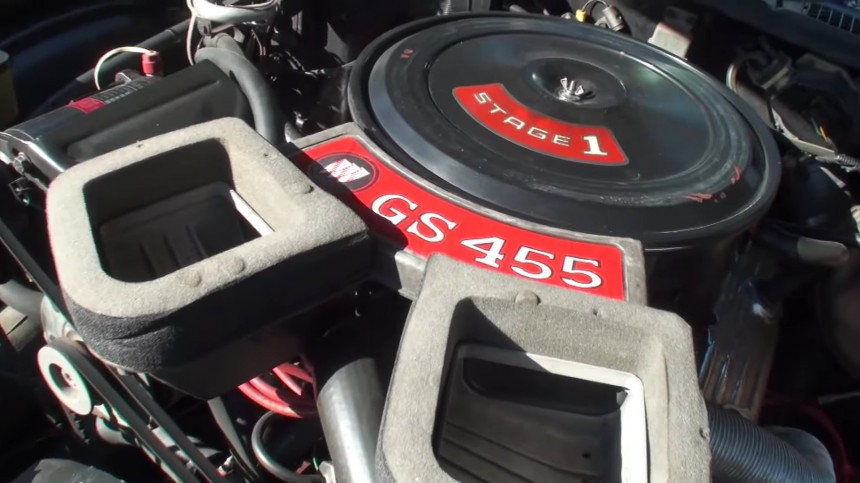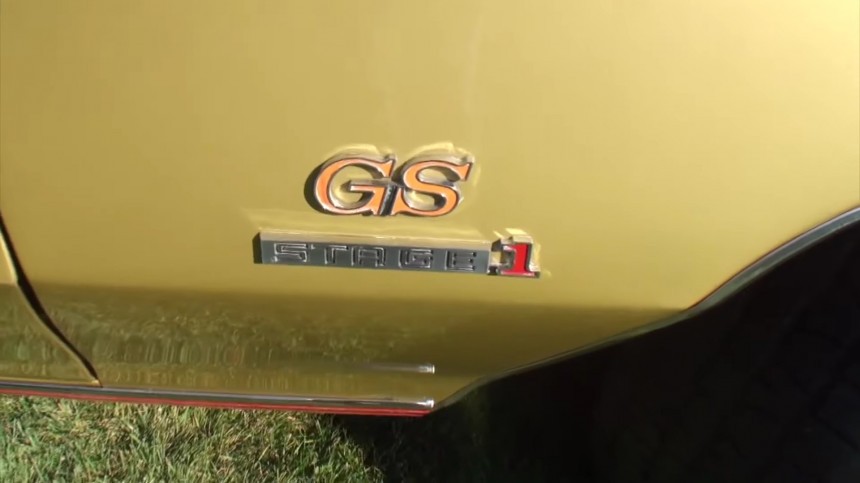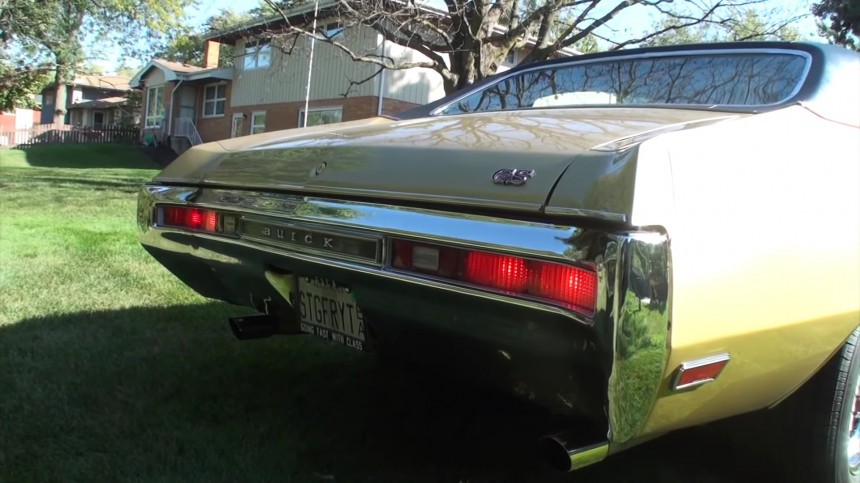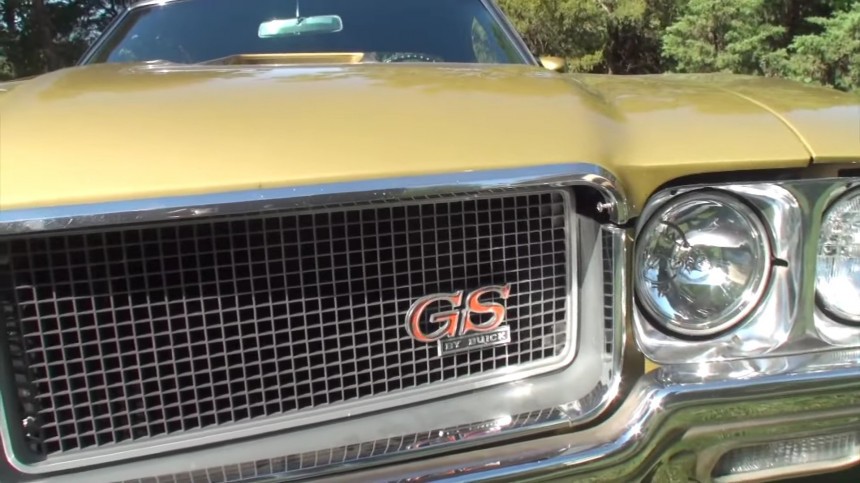Toward the end of the seventh decade of the last century, the Holy Spirit of Cylinders must have descended upon the headquarters of General Motors and converted the suits in the upper offices to high-displacement faith. So, by 1970, GM’s divisions were rolling out the rest of their big guns, following the 1968 Oldsmobile V8 Rocket.
BIG, in all capitals, as a 440-CID engine from across the road in Detroit (7.2 liters) was suddenly looking up to 454s, 455s, and even the mighty 500 (8.2 liters, exclusive to the luxury Caddy Eldorado). While the 454 CID (7.4 liters) V8 debuted in 1970, its one-cubic-inch-older brother, a 455 CID (7.5 liters) monster, came out in 1968.
Nonetheless, 1970 fully opened the GM gates of hellfire-forged V8s, and the salvos from the mighty engines sparkled fireworks upon the horsepower war. Except GM played the slick card and didn’t take the power rating as the engineering creed. Instead, they marched on the torque fields.
And they caught everyone on the wrong foot. The Cadillac 500 produced a stated 400 hp (406 PS) and 550 lb-ft (746 Nm) of torque. The infamous LS6 in the Chevelle SS – the 454 big block – turned out 450 hp and 500 lb-ft (456 PS / 678 Nm). Finally, the 455 fell in the middle, with an advertised 350 hp (355 PS) and 510 lb-ft (691 Nm) of crank-revving stamina.
Job done for 1970: GM won the size wars on all three fronts – displacement, torque, and horsepower. But GM didn’t fall asleep on its triple crown of laurels and kicked it up a notch. Since the high-end performance models belonged to the Buick division, it was up to the engineers from GM’s longest-standing brand to tweak performance.
And they did, in the form of the Buick Grand Sport Stage 1, better known as the “banker’s hot rod.” The GS 455 Stage 1 was a “luxury muscle car” (if it sounds like a harmonious oil-and-water mixture, it’s only because the terms are usually glued to quite the opposite ends of the automotive spectrum).
The tri-shielded badge on a dragstrip blaster shaming everyone else was unheard of. Because it hadn’t been done before, GM took the shot and hit the bull’s eye impeccably. Sure, also in 1970, GM dropped a big-block in the Monte Carlo under the sportier Chevrolet emblem. That also came out with high-end options, but was never marketed as a muscle car.
Colloquially famed as a “HEMI killer,” the GS 455 Stage 1 had the already-impressive 455 CID V8 (7.5 liters, in case it slipped somebody’s mind) slightly tuned for high performance. Testing one in January of 1970, Motor Trend journalists reported a 13.38-second quarter-mile time at 106 mph (170 kph).
Larger valves with stiffer springs, high-flow port heads, a performance camshaft, cold air induction (via twin hood scoops), and a high-grade version of the Rochester Quadrajet 4-barrel carburetor made this Buick a mouth shutter.
The horsepower gain was officially reported at ten extra hp, from the standard 350 hp to 360 hp (355 PS / 365 PS). Torque figures were unchanged, but nobody took Buick’s word for granted about the power boost. Word of mouth was the number was closer to 400, but dyno tests performed in that era didn’t back those suspicions.
To keep the 10.5:1 compression ratio unscathed, two solenoid-operated blowholes opened up to let cool air into the carb when the engine bay temperature became too high. The car had a three- or four-speed manual or a three-speed automatic.
The latter was produced in vastly higher numbers than the clutch pedal-optioned variant. Two rear-end differentials were available, 3.64:1 or 3.42:1 (the second was mandatory for the air-conditioning-equipped muscle Buicks).
2,465 hardtops were produced for 1970: 16 three-speed manuals, 664 four-speed manuals, and 1,785 Turbo Hydramatic 400 automatics. Perfectly disguised as a mundane hardtop for a pompous high-ranked accountant, the GS 455 Stage 1 offers very little – if any – visual cues as to its true potential.
Apart from the subtle “Stage 1” footnote under the front fenders emblem, nothing screams “High Performance” on this Buick. That is, until the engine comes out of its slumber. Listen to one impressive 455 V8 in the video (shot last fall, but freshly published) from Lou Costabile.
The burble and grunt (courtesy of an aggressive heavy-duty camshaft) would send shivers up the spine of anyone standing by the hood. A few steps toward the rear and the exhaust drums the warcry of white-knuckle surprise. It is a rapturous tremble of an idling growl, a prophecy of thunderstorms to blast the quarter-mile challenge.
Lean on the go pedal, and the reason for a “Going Fast with Class” slogan becomes self-explanatory. Interestingly, as much as this car was about speed, power, and torque, the standard brakes were all drums. For some extra cash, a mixture of front discs and rear drums would be installed (either classic or power-assisted).
From a salesman standpoint, the Buick GS 455 Stage 1 model had its best year in 1970. The following years saw a decline in production numbers for the performance version of the big-engined executive sport coupe.
Nonetheless, 1970 fully opened the GM gates of hellfire-forged V8s, and the salvos from the mighty engines sparkled fireworks upon the horsepower war. Except GM played the slick card and didn’t take the power rating as the engineering creed. Instead, they marched on the torque fields.
And they caught everyone on the wrong foot. The Cadillac 500 produced a stated 400 hp (406 PS) and 550 lb-ft (746 Nm) of torque. The infamous LS6 in the Chevelle SS – the 454 big block – turned out 450 hp and 500 lb-ft (456 PS / 678 Nm). Finally, the 455 fell in the middle, with an advertised 350 hp (355 PS) and 510 lb-ft (691 Nm) of crank-revving stamina.
And they did, in the form of the Buick Grand Sport Stage 1, better known as the “banker’s hot rod.” The GS 455 Stage 1 was a “luxury muscle car” (if it sounds like a harmonious oil-and-water mixture, it’s only because the terms are usually glued to quite the opposite ends of the automotive spectrum).
The tri-shielded badge on a dragstrip blaster shaming everyone else was unheard of. Because it hadn’t been done before, GM took the shot and hit the bull’s eye impeccably. Sure, also in 1970, GM dropped a big-block in the Monte Carlo under the sportier Chevrolet emblem. That also came out with high-end options, but was never marketed as a muscle car.
Larger valves with stiffer springs, high-flow port heads, a performance camshaft, cold air induction (via twin hood scoops), and a high-grade version of the Rochester Quadrajet 4-barrel carburetor made this Buick a mouth shutter.
The horsepower gain was officially reported at ten extra hp, from the standard 350 hp to 360 hp (355 PS / 365 PS). Torque figures were unchanged, but nobody took Buick’s word for granted about the power boost. Word of mouth was the number was closer to 400, but dyno tests performed in that era didn’t back those suspicions.
The latter was produced in vastly higher numbers than the clutch pedal-optioned variant. Two rear-end differentials were available, 3.64:1 or 3.42:1 (the second was mandatory for the air-conditioning-equipped muscle Buicks).
2,465 hardtops were produced for 1970: 16 three-speed manuals, 664 four-speed manuals, and 1,785 Turbo Hydramatic 400 automatics. Perfectly disguised as a mundane hardtop for a pompous high-ranked accountant, the GS 455 Stage 1 offers very little – if any – visual cues as to its true potential.
Apart from the subtle “Stage 1” footnote under the front fenders emblem, nothing screams “High Performance” on this Buick. That is, until the engine comes out of its slumber. Listen to one impressive 455 V8 in the video (shot last fall, but freshly published) from Lou Costabile.
Lean on the go pedal, and the reason for a “Going Fast with Class” slogan becomes self-explanatory. Interestingly, as much as this car was about speed, power, and torque, the standard brakes were all drums. For some extra cash, a mixture of front discs and rear drums would be installed (either classic or power-assisted).
From a salesman standpoint, the Buick GS 455 Stage 1 model had its best year in 1970. The following years saw a decline in production numbers for the performance version of the big-engined executive sport coupe.
